What Color Says About Your Business

Color has a deep and often subconscious effect on our behavior.
According to a study examining the effect of color on sales, 92.6% of people surveyed by the CCI: Institute for Color Research said that color was the most important factor when purchasing products.
How you use color in your business can affect the success or failure of your business.
Let's take a closer look.
Color: Truly in the Eye of the Beholder

Image via Wikipedia
We can thank Newton for discovering that color is the sensation of light bouncing off something and entering our eyes. Newton found that light is made up of many different wavelengths, each one perceived as a different color.
For example, the color red isn't actually in the strawberry itself. The surface of the strawberry absorbs all of the light except for the wavelengths we perceive as red. These bounce off of the fruit and into our eyes.

How the eye sees color, via Ted Ed
We have millions of light-sensitive cells, or receptors, at the back of our eyes.
The brain takes those signals and interprets them as color: in this case, red.
Because the brain is interpreting the color, that means that color is, by nature, a sensation.
Sensations are personal.
It's this fact that makes our choice and use of color so critical to the success of our businesses.
The Qualities of Color
While our perception of colors and what they mean is subjective, there are some basic qualities that we can apply generally.
- Red. Often considered exciting, attention-grabbing, warm, and connected to love, anger, life, and comfort.
- Yellow. Seen as adventurous, evoking happiness, enthusiasm, youth, and travel.
- Green. Of course, this color is connected to money, but it's also known for its connection to balance, health, sustainability, and knowledge.
- Blue. The color of honesty, high quality, competence, trust, reliability, and integrity.
- Pink. This color evokes love, compassion, romance, gentleness, and sophistication.
- Purple. Creativity, royalty, mystery, respect, and playfulness are often connected to purple (and violet).
- Brown. Brown is the color of the outdoors and can be seen as friendly, organic, natural, friendly, and rugged.
- Black. This color is all about sophistication, intelligence, seriousness, and expense.
- White. The antithesis of black is known for its order, innocence, purity, cleanliness, neutrality, and space.
- Grey. When you need to communicate timelessness, neutrality, refinement, of the moment, or practicality, you might want to use grey.
Picking The Right Colors
A powerful brand starts with a professionally designed logo. Color plays an important role in logo design, as we discussed recently in our look at current logo trends.
Research shows that anticipating your consumer's reaction to a color and its relationship to your brand is more important than the actual color itself.
Customers want to see that a color "fits."
For example, the color pink probably doesn't fit with a brand like Ford or Harley Davidson, and black would be perceived as wrong for Fisher-Price or an organic health food store.
It's not that the company name Fisher-Price by itself evokes a specific reaction from its customers. But the overall composition of the brand, including its logo, marketing, products, etc. evokes a reaction that responds differently to different brand colors.
The key takeaway here is that it's less important what color you choose, and more that you choose colors that highlight or accentuate the personality you want your brand and product to reflect.
For example, research on the use of color in retail fashion stores shows that customers are more likely to return and make purchases in a store that uses a blue color scheme versus orange.

Researchers found that viewing the color pink actually causes people's endocrine system (also known as the body's chemical messaging system) to slow down, and our muscles to relax.
So if you've ever wondered why so many products connected to soothing problems (such as pain-killers, stomach aids, and female hygiene products) include pink in their packaging, now you know: the color itself makes us think of relaxation and relief.
Another study found that patients given placebo pills in warmer colors like pink reported them to be more effective than pills with cooler colors.
Case Studies
Here are several real-world case studies that illustrate how changes in color impact customer behavior.

Performable ran an A/B test on which colored button performed better. Spoiler alert: Red won.
Case Study 1: Performable red vs. green study
As we said in our look at how 21 companies use color:
Interested in using the power of red to improve conversions, marketing automation company Performable A/B tested the difference in performance of a red call-to-action button versus a green one. The red button showed a 21% increase in conversion.
These results are impressive, but they don't mean you should run out and change all of your buttons to red. Conduct your own tests to see what works for your business and your specific audience.

Image courtesy of Apple
Case Study 2: Apple
Apple was on the verge of bankruptcy when Steve Jobs came back and turned it into a business school case study success.
As Jeff Goldblum so eccentrically pointed out in commercials for Apple's brand new "Bondi Blue"-colored computer, the iMac, color was a huge reason for this.
Referring to the existing IBM PC beige box status quo, Goldblum summed up Apple's attitude: "It's beige, it's boring, it's bland."
You can see this trend continue in the products Apple created after the iMac (iPhone, iPad, the Apple watch, and more), and how Apple has used color in those products.
You don't need Apple's vast resources to take advantage of existing color research and development, and all businesses can take a page out of their color strategy.
Be more intentional with how you choose colors for your business.
Don't be boring.
About the Author: Amanda Bowman works in customer service at crowdspring, one of the world's leading marketplaces for crowdsourced logo design, web design, graphic design, product design, and company naming services. Amanda helps guide crowdspring customers through the easy process of obtaining affordable, high-quality custom artwork and content for their business.
Subscribe to Our Newsletter!
Latest in Marketing








